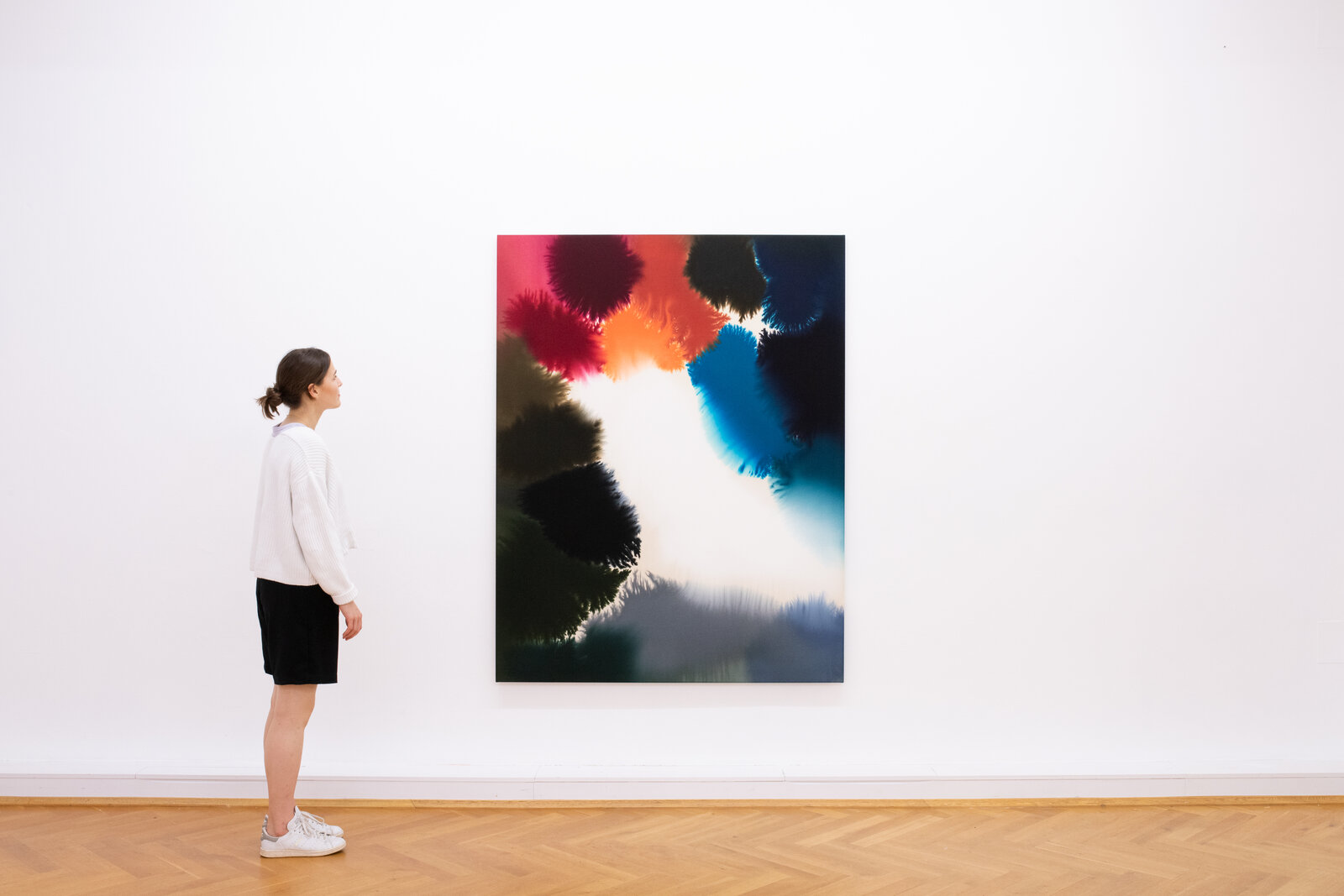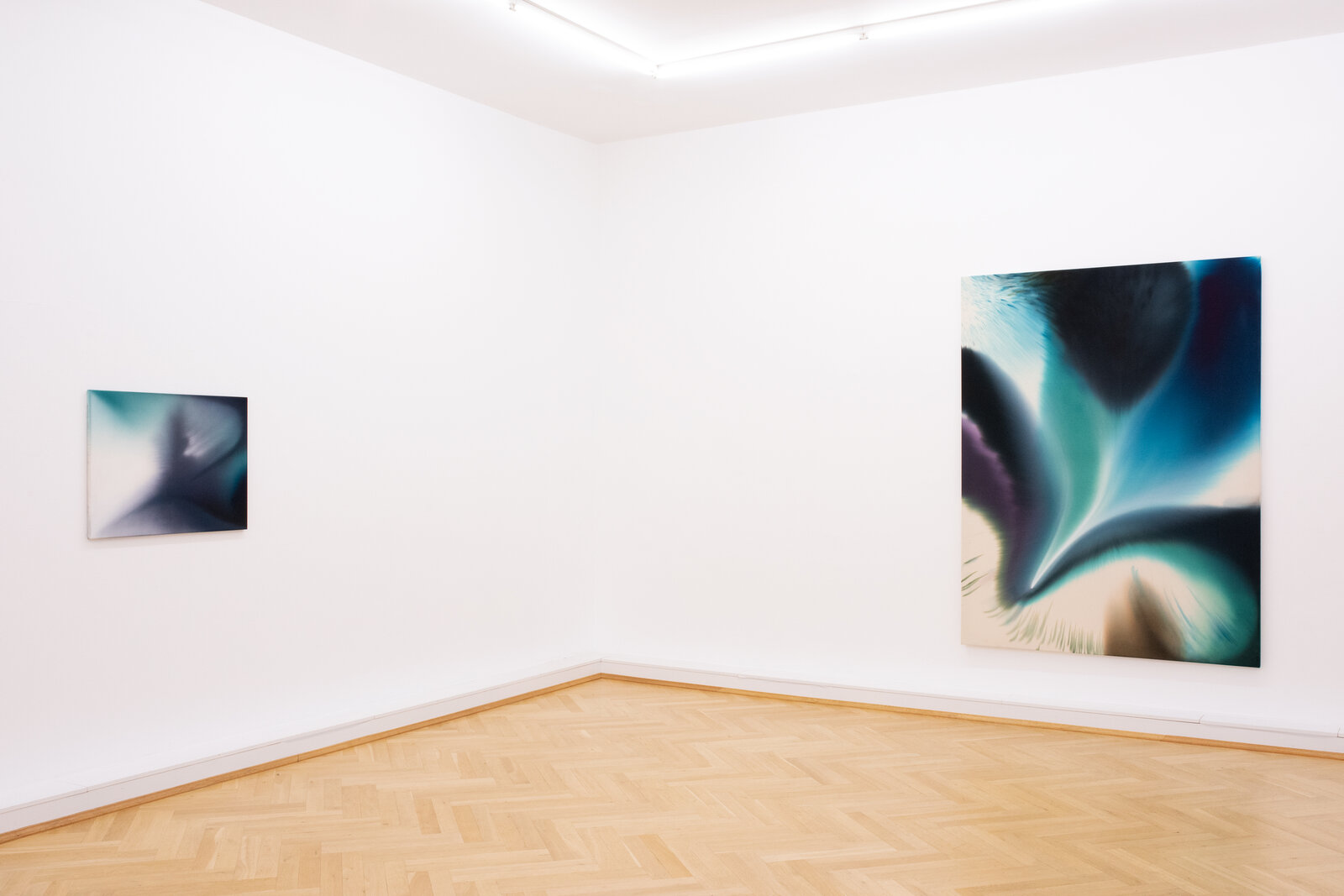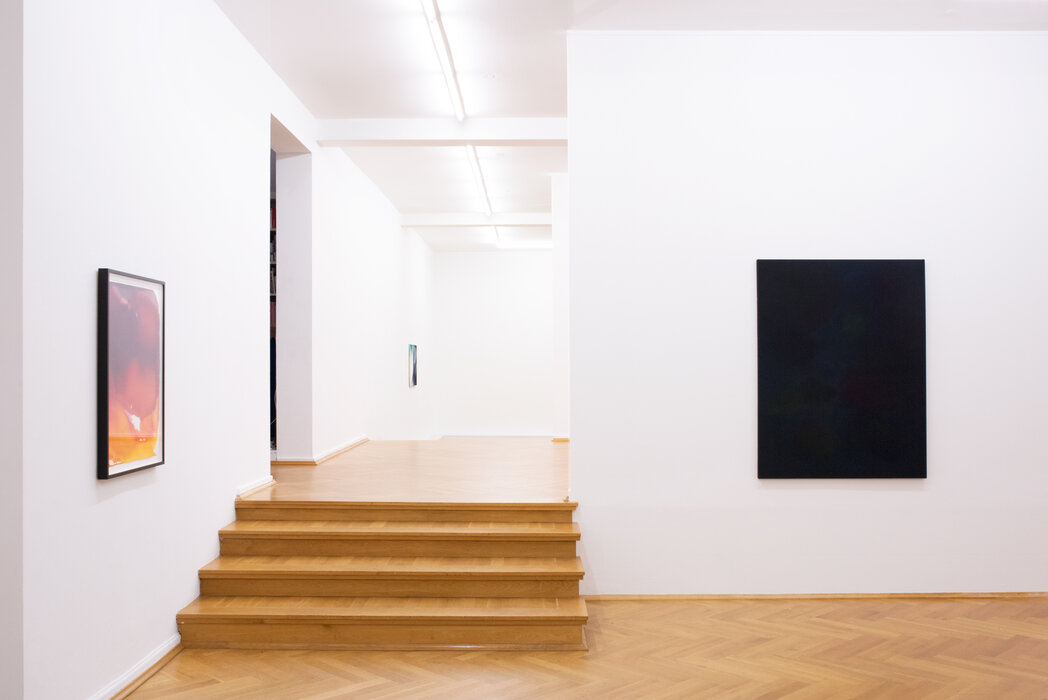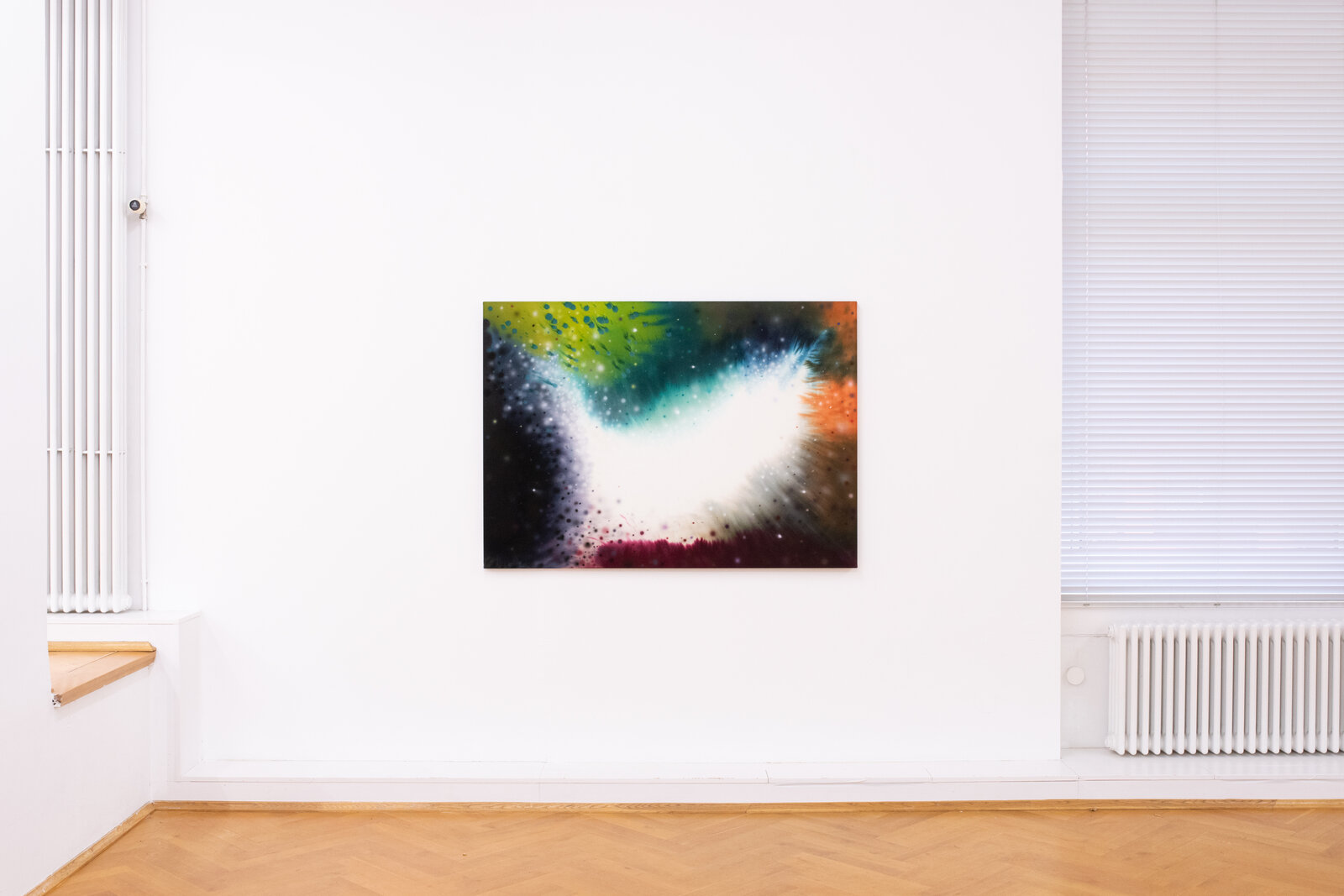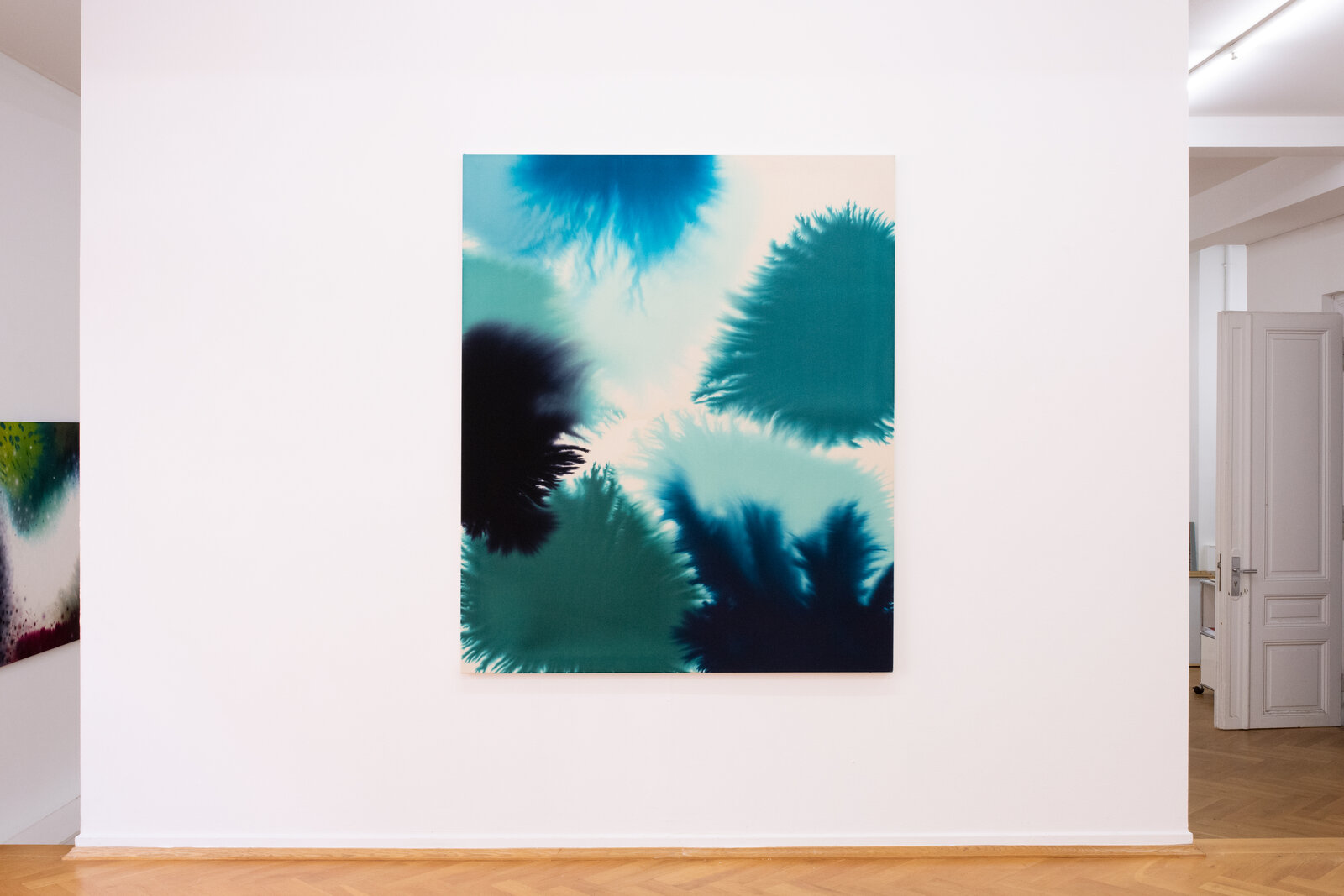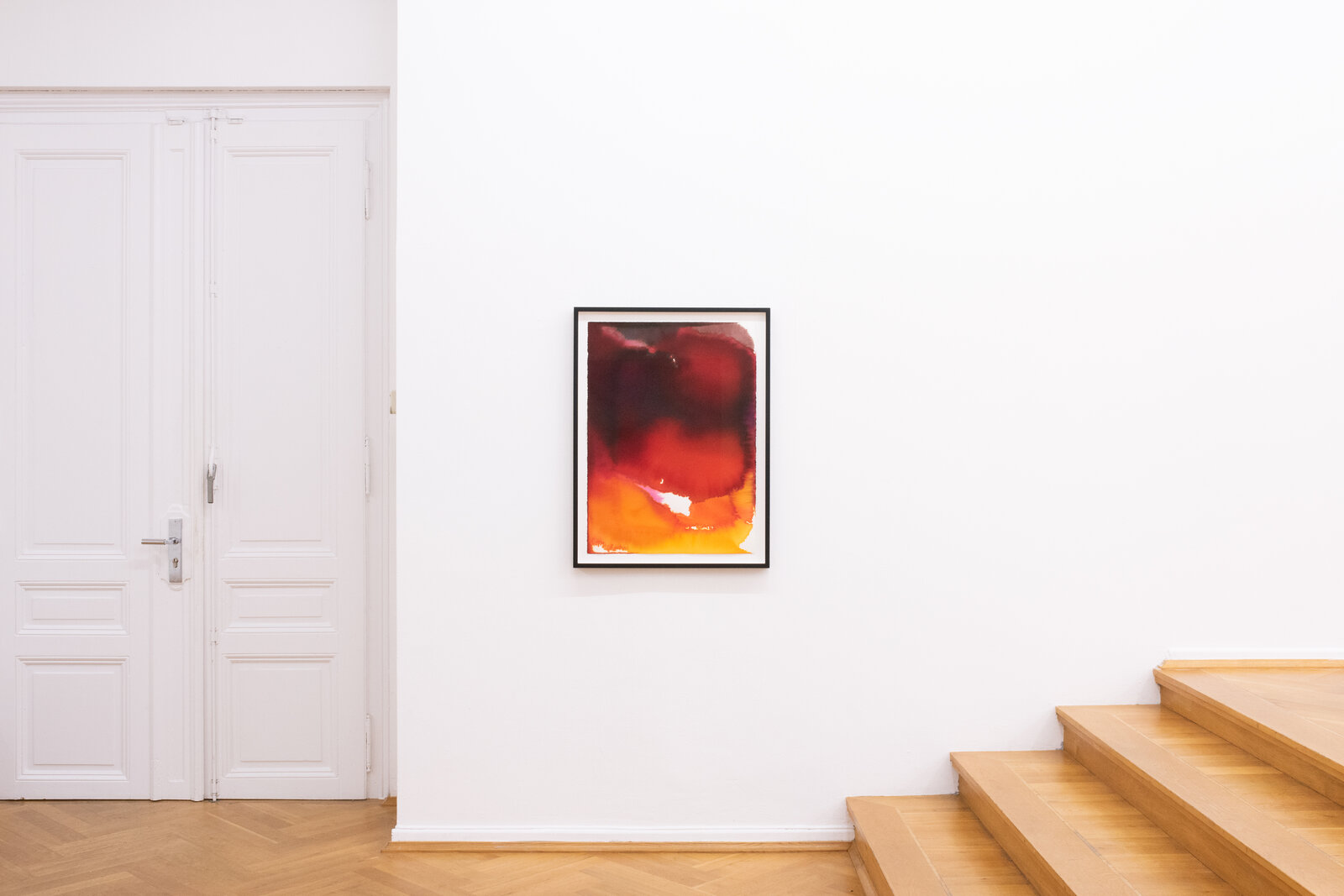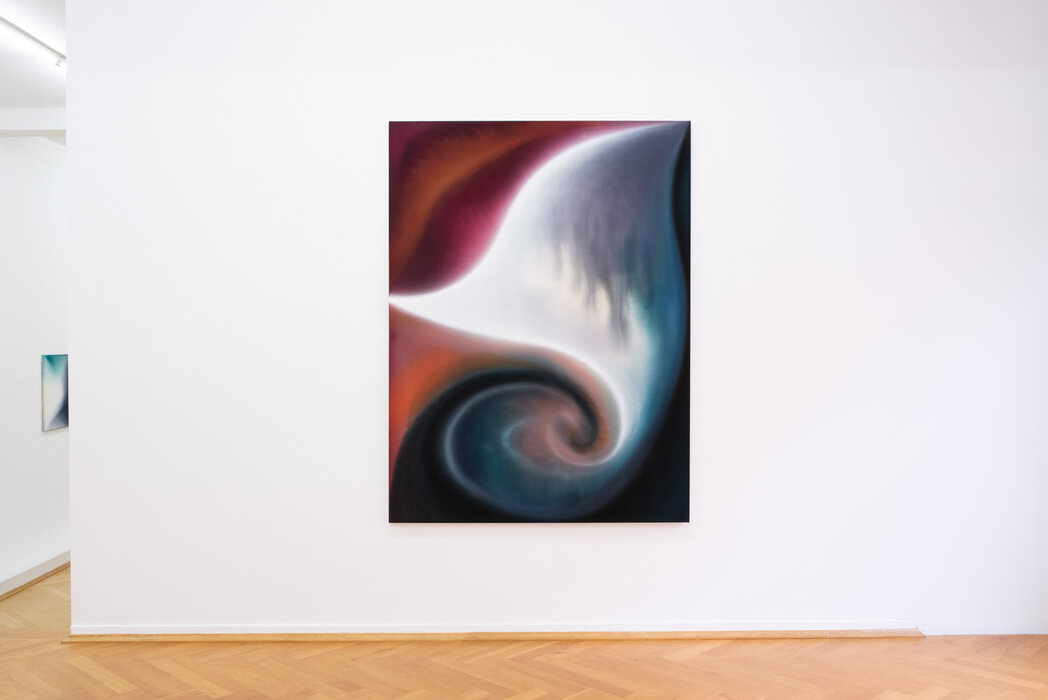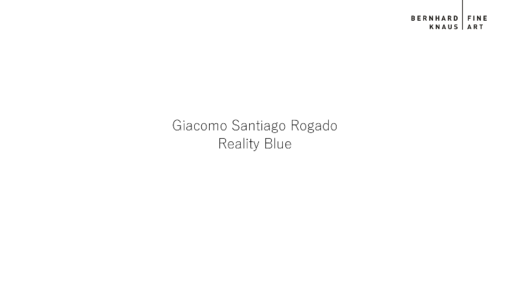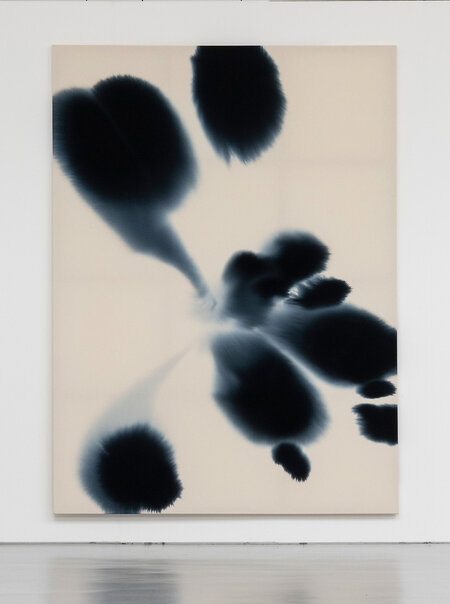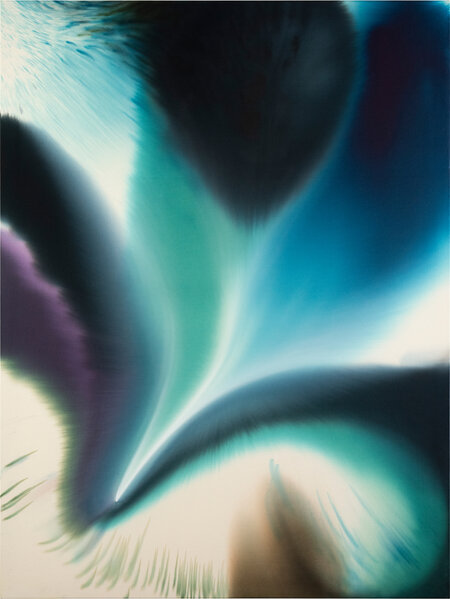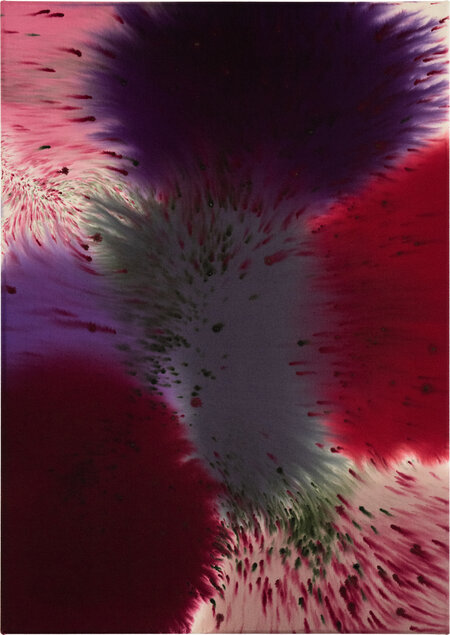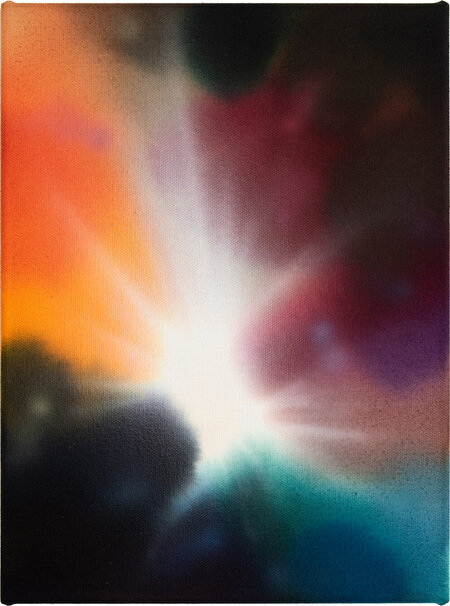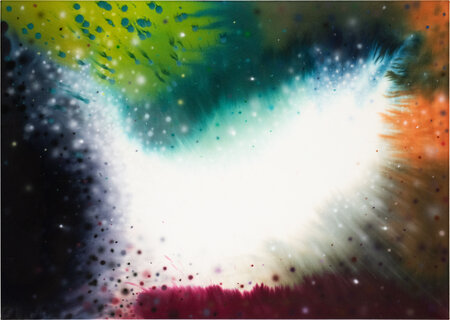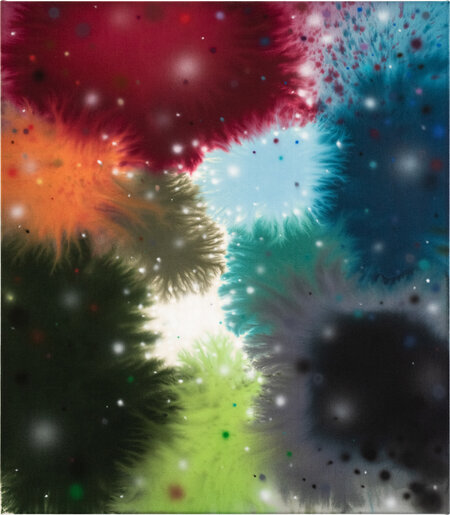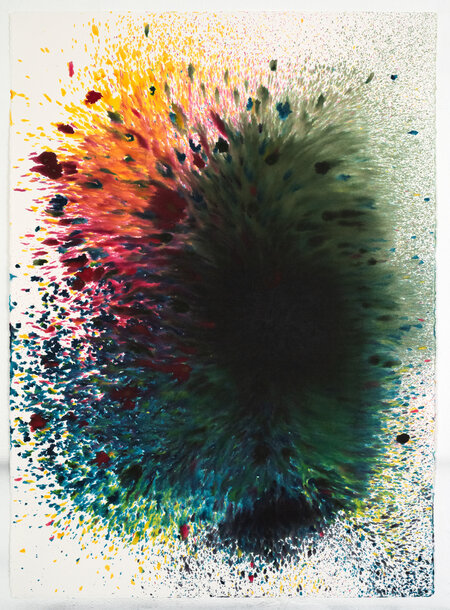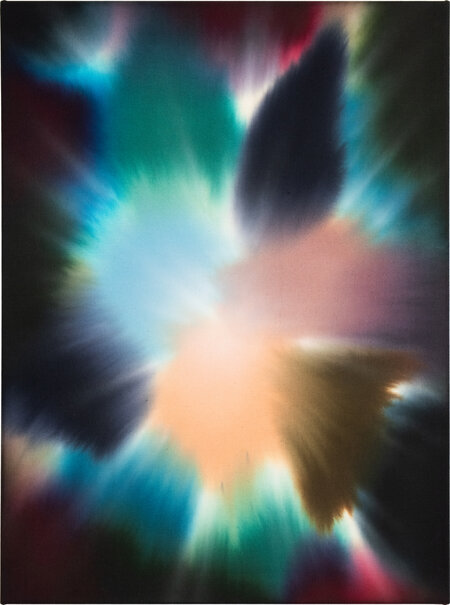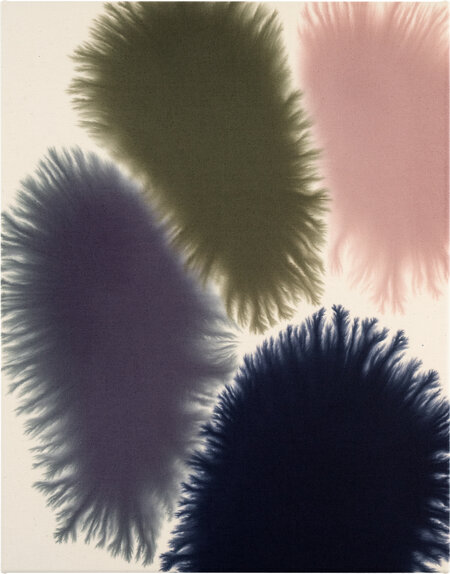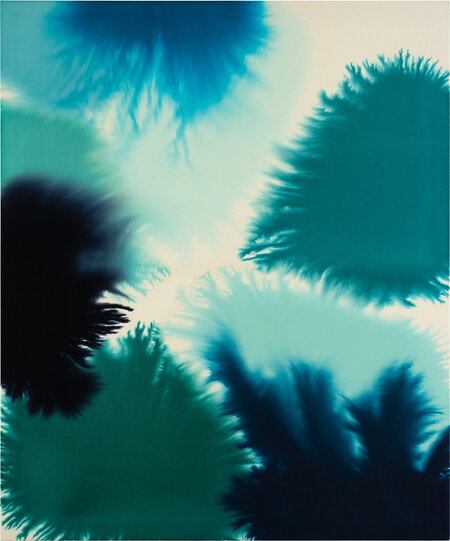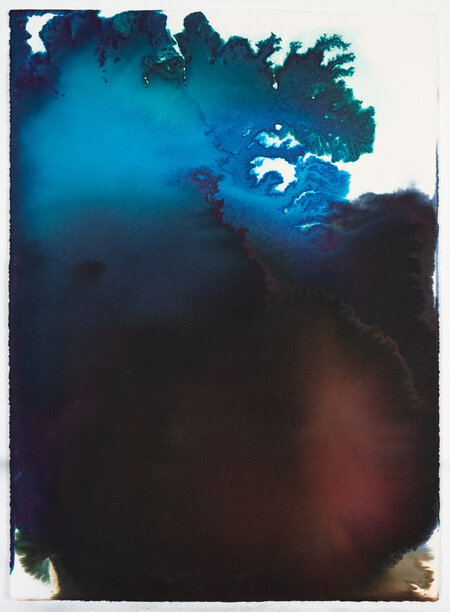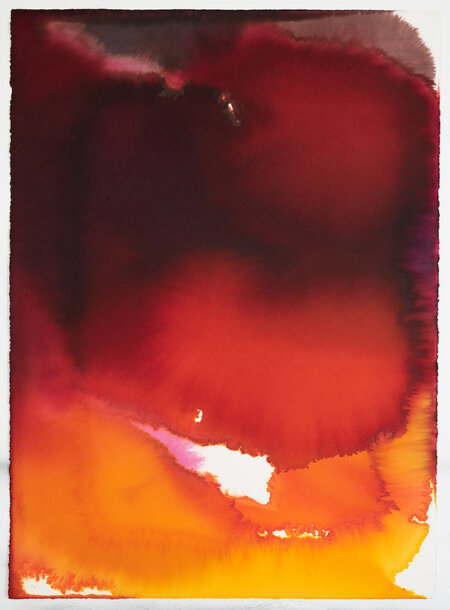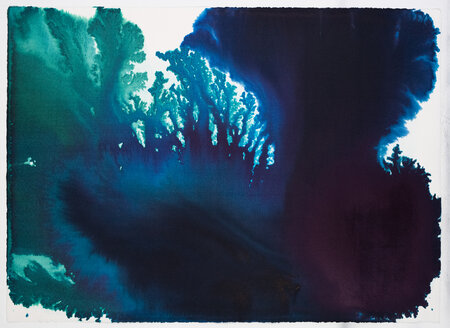01.07. - 02.09.2022
Opening with the artist
30th June, 7 pm
Blue is water, sky, infinity or, according to Yves Klein, "the invisible becoming visible". In the latest works by Swiss artist Giacomo Santiago Rogado, the distance between color and its perception dissolves. The intuitive comes to the fore. Rogado's third solo exhibition at Bernhard Knaus Fine Art brings together these recent works that play with the impossibility of perceiving things as they really are.
Close your eyes and imagine an ocean. In all likelihood, the color blue predominates in this image. Conversely, blue is automatically associated with largely positive qualities and things like tranquility or the sea. Blue also often plays a central role in the paintings of Giacomo Santiago Rogado, where the artist combines the depth of the color with the rest of the color spectrum in harmonious compositions. This harmony, based on the artist's meditative way of working, is transmitted to the viewer. Colors become figures on the canvas, which make contact with the subconscious and set meditative processes in motion.
In his latest paintings, Rogado continues developments that were already touched in earlier works. The artist thereby transfers the act of painting in parts to the materials of his works: cotton, pigment and water. Circular forms emerge, traces of color movements settle into the canvas or onto paper. The works from the series "Intuition" show an interplay of light and darkness. Both components seem to arise from similar centers, which, however, cannot be firmly located. Nuances from turquoise to midnight blue, from crimson to bordeaux red, enter into connections and spread further in the pictorial space. There is something mysterious about this flow of forms and colors. It almost seems as if higher forces were at work in its creation. And this thought is not so far-fetched, because Giacomo Santiago Rogado's works release emotional forces in the viewer, who becomes one with the paintings and consequently to a certain extent with the artist himself. "The painter is you, the painter is me." These words by the Zen monk Seigaku Higuchi could not describe more aptly the effect of Rogado's paintings, the intuitive-expressive bonds between the viewing eye, the painting and its painter.
Affective, meditative, contemplative - this is how the encounter with a painting by Giacomo Santiago Rogado can be described. However, the artist leaves it up to the viewers which emotions are triggered by looking at his works. In German, the word "Betrachtung" (observation) stems from „Achtung“ which can be translated as both paying attention and respecting something or somebody. The verb „betrachten“ then describes a mutual exchange, in which one can get to know one's environment, but also oneself, better. In current times, in which the concept of mindfulness seems to be overused by the media, but still has its appeal in contrast to the everyday oversaturation by diverse impressions, it is more important than ever to reflect on where attention flows. If one understands Rogado's work "Thrust", for example, as an invitation to reflection and follows it, one receives new impressions of one's own and a common reality. The invisible possibly moves into the field of vision.
Giacomo Santiago Rogado (*1979 in Lucerne) lives and works in Berlin, Lucerne and Basel. His works have been shown in numerous solo and group exhibitions in Zurich, Berlin, Barcelona and London. Rogado's works are represented in important public and private collections, such as that of the Aargauer Kunsthaus Aarau or the collections of Kunstmuseum St. Gallen and Kunstmuseum Solothurn. The artist's room-filling installations were most recently exhibited at Städtische Galerie Delmenhorst and Kunsthalle Luzern.
30th June, 7 pm
Blue is water, sky, infinity or, according to Yves Klein, "the invisible becoming visible". In the latest works by Swiss artist Giacomo Santiago Rogado, the distance between color and its perception dissolves. The intuitive comes to the fore. Rogado's third solo exhibition at Bernhard Knaus Fine Art brings together these recent works that play with the impossibility of perceiving things as they really are.
Close your eyes and imagine an ocean. In all likelihood, the color blue predominates in this image. Conversely, blue is automatically associated with largely positive qualities and things like tranquility or the sea. Blue also often plays a central role in the paintings of Giacomo Santiago Rogado, where the artist combines the depth of the color with the rest of the color spectrum in harmonious compositions. This harmony, based on the artist's meditative way of working, is transmitted to the viewer. Colors become figures on the canvas, which make contact with the subconscious and set meditative processes in motion.
In his latest paintings, Rogado continues developments that were already touched in earlier works. The artist thereby transfers the act of painting in parts to the materials of his works: cotton, pigment and water. Circular forms emerge, traces of color movements settle into the canvas or onto paper. The works from the series "Intuition" show an interplay of light and darkness. Both components seem to arise from similar centers, which, however, cannot be firmly located. Nuances from turquoise to midnight blue, from crimson to bordeaux red, enter into connections and spread further in the pictorial space. There is something mysterious about this flow of forms and colors. It almost seems as if higher forces were at work in its creation. And this thought is not so far-fetched, because Giacomo Santiago Rogado's works release emotional forces in the viewer, who becomes one with the paintings and consequently to a certain extent with the artist himself. "The painter is you, the painter is me." These words by the Zen monk Seigaku Higuchi could not describe more aptly the effect of Rogado's paintings, the intuitive-expressive bonds between the viewing eye, the painting and its painter.
Affective, meditative, contemplative - this is how the encounter with a painting by Giacomo Santiago Rogado can be described. However, the artist leaves it up to the viewers which emotions are triggered by looking at his works. In German, the word "Betrachtung" (observation) stems from „Achtung“ which can be translated as both paying attention and respecting something or somebody. The verb „betrachten“ then describes a mutual exchange, in which one can get to know one's environment, but also oneself, better. In current times, in which the concept of mindfulness seems to be overused by the media, but still has its appeal in contrast to the everyday oversaturation by diverse impressions, it is more important than ever to reflect on where attention flows. If one understands Rogado's work "Thrust", for example, as an invitation to reflection and follows it, one receives new impressions of one's own and a common reality. The invisible possibly moves into the field of vision.
Giacomo Santiago Rogado (*1979 in Lucerne) lives and works in Berlin, Lucerne and Basel. His works have been shown in numerous solo and group exhibitions in Zurich, Berlin, Barcelona and London. Rogado's works are represented in important public and private collections, such as that of the Aargauer Kunsthaus Aarau or the collections of Kunstmuseum St. Gallen and Kunstmuseum Solothurn. The artist's room-filling installations were most recently exhibited at Städtische Galerie Delmenhorst and Kunsthalle Luzern.
